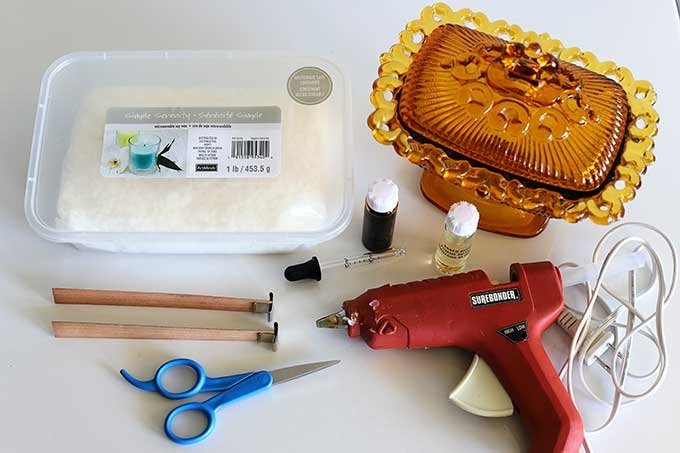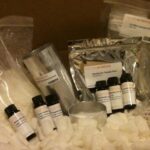Candle making has soared in popularity in recent years, becoming a fascinating and satisfying hobby for countless individuals. The process of creating your own candles from scratch is not only an enjoyable activity but also allows you to customize the scent, color, and style of each candle to suit your personal taste. The anticipation of seeing your creation come to life and the excitement of eventually being able to burn it is undeniably thrilling.
In this article, we will explore the world of candle making, providing a step-by-step guide that will walk you through the process. Additionally, we will delve into the concept of the curing process, answering the question that many novice candle makers often ask: How long after making a candle can I burn it? So, join us on this delightful journey as we uncover the ins and outs of creating and enjoying homemade candles.
Step one in understanding how long after making a candle can you burn it involves acknowledging that candle making is truly an art form. It allows individuals to create beautiful pieces that not only serve a practical purpose but also add ambiance and fragrance to any space. Through careful selection of materials such as wax, wicks, fragrances, and containers, one can tailor their candles to suit specific preferences or occasions.
As intriguing as it may be to jump immediately into burning your freshly created candles right after completing them, patience is key when it comes to homemade candles. The curing process plays a vital role in producing high-quality candles that burn cleanly and evenly. But what exactly is curing?
It refers to allowing the candle’s wax blend to fully set over time before lighting it for the first time. This period allows for better performance and enhances fragrance throw when eventually burning the candle.
Now that we have addressed the importance of curing in achieving optimal quality candles let’s dive deeper into various factors affecting how long after making a candle you can effectively burn it. factors such as temperature fluctuations within storage conditions humidity levels delicate scents added to the wax and even if you use dyes all influence a candle’s curing timeline. It is crucial to understand these factors to ensure you have the best results with your homemade candles.
Step-by-Step Guide to Making a Candle
Selecting the Right Materials
Before you begin making your own candle, it’s important to ensure that you have all the necessary materials. This includes selecting the right wax, wick, fragrance, and container for your candle.
When it comes to choosing a wax, there are several options available such as soy, beeswax, and paraffin. Each type of wax has its own unique characteristics and melting points, so it’s important to consider factors like burn time and scent throw when making your selection.
In addition to selecting the right wax, you’ll also need to choose an appropriate wick size for your candle. The size of the wick will depend on the diameter of your container and the type of wax being used. It’s important to choose a wick that will create a steady flame and allow for proper fragrance diffusion.
Lastly, consider what fragrance or essential oil you want to use in your candle. There are countless options available on the market, ranging from floral scents to fresh citrus aromas. Choose a fragrance that complements your personal preferences and matches the desired ambiance for your space.
The Candle-Making Process
Now that you have all your materials ready, it’s time to dive into the candle-making process. Here is a step-by-step guide to help you along:
- Melting the Wax: Begin by melting your chosen wax using either a double boiler or a microwave-safe container. Be sure to follow safety precautions and heat slowly until fully melted.
- Adding Fragrance: Once the wax is completely melted, add your chosen fragrance oil or essential oil according to manufacturer instructions. Stir well to ensure even distribution.
- Preparing the Container: While waiting for the scented wax to cool slightly, prepare your container by attaching the wick securely at its base using either hot glue or a wick sticker.
- Pouring the Wax: Slowly pour the scented wax into your prepared container, taking care not to spill or overfill. Leave a bit of space at the top for the candle to solidify.
- Setting the Wick: Keep the wick centered and straight as you pour the wax. You can achieve this by using a wick centering device or by gently holding the wick in place until the wax begins to set.
- Allowing it to Cool: Let your candle cool undisturbed for several hours or overnight until completely solidified. This is an important step in ensuring proper curing and optimal burn performance.
Additional Tips and Insights
- When selecting a container for your candle, consider using heat-resistant glass or tin containers that are specifically designed for candle making.
- If you want to add color to your candle, choose high-quality dyes or pigments that are suitable for use in candles. Follow manufacturer instructions on how much dye to add based on the amount of wax being used.
- Keep in mind that different fragrances have varying flashpoints and scent throw capabilities. It’s always a good idea to check with your fragrance supplier for specific guidelines on usage levels and compatibility with different waxes.
- Remember to work in a clean and well-ventilated area when making candles, as certain fragrances and chemicals can emit strong odors during melting.
Now that you have completed all these steps, you may be wondering how long you need to wait before enjoying your homemade candle. The next section will explore the concept of curing in more detail and provide recommendations on how long you should let your candle cure before burning it.
Understanding the Curing Process
The curing process is an essential step in candle making that often goes overlooked by beginners. After all the time and effort put into making a handmade candle, it can be tempting to want to burn it immediately. However, understanding the importance of allowing the candle to cure before lighting it is key to achieving optimal burn performance and fragrance throw.
The curing process refers to the time it takes for a newly made candle to fully develop its scent and burn characteristics. During this time, the wax and fragrance oils blend together, allowing the scent to become stronger and more evenly distributed throughout the candle. Additionally, the wick needs time to properly absorb the wax, ensuring an even burn when lit.
The length of the curing process can vary depending on several factors including temperature, humidity levels, and type of fragrance used. Generally speaking, most candle makers recommend a curing period of at least 24-48 hours for paraffin or soy wax candles with standard fragrance oils. However, some fragrances may require a longer curing time of up to two weeks or more for optimal performance.
| Factors | Average Curing Time |
|---|---|
| Ambient Temperature | 24 hours at 70°F (21°C) |
| Fragrance Type | Standard: 24-48 hours; Complex or heavy fragrances: up to two weeks |
| Humidity Levels | Normal humidity: 24-48 hours; High humidity: additional drying time needed |
By taking note of these factors and their impact on curing time, candle makers can adjust their process accordingly and ensure that each candle is properly cured before being enjoyed. It’s always a good idea to perform tests with different variables to find the optimal curing time for your specific candle-making materials and conditions.
Factors Affecting the Curing Time
Type of Wax
One of the main factors that can influence the time it takes for a candle to cure is the type of wax used. Different types of wax have different chemical compositions and properties, which can affect the curing process.
For example, soy wax generally has a shorter curing time compared to other waxes such as beeswax or paraffin wax. Soy wax tends to cure relatively quickly, usually within one to two days. On the other hand, beeswax and paraffin wax may require a longer curing period of at least one week or more.
It’s important to note that each type of wax may have specific instructions and recommendations provided by manufacturers regarding its curing time. So be sure to check the product label or consult the manufacturer’s guidelines for the specific wax you are using.
Impact of Fragrance Oils and Dyes
Another factor that can affect the curing process is the use of fragrance oils and dyes in candle making. While adding fragrance oils and dyes can enhance the aesthetic appeal and scent throw of candles, they can also impact the curing time.
Fragrance oils typically contain various ingredients that can affect how quickly or slowly a candle cures. Some fragrance oils may require longer curing periods due to their specific chemical composition. It’s important to follow the recommended usage rates provided by fragrance oil suppliers and allow enough time for proper curing.
Similarly, certain color dyes used in candles may also impact the curing time. Some dyes can slow down or delay the curing process, so it’s essential to choose dyes that are specifically designed for candle making and carefully follow any instructions provided by dye manufacturers.
By considering these factors when making your candles, you can ensure that your candles are properly cured before burning them, resulting in better performance and enjoyment of your homemade creations.
Recommended Curing Time for Different Types of Wax and Additives
The curing time for candles can vary depending on the type of wax used and any additives or fragrances included in the candle-making process. Here are some general guidelines for the recommended curing time for different types of wax and additives:
- Soy Wax: Soy wax is a popular choice among candle makers due to its natural properties and clean burn. Generally, soy candles require a minimum of 48 hours to cure before they are ready to be burned. However, for optimal results, it is recommended to let them cure for at least one week. This allows the fragrance oils and waxes to fully bond, resulting in a stronger scent throw and better burning performance.
- Beeswax: Beeswax is known for its natural sweet aroma and slow burn rate. Curing beeswax candles is essential as it helps enhance their fragrance throw and overall quality. It is recommended to allow beeswax candles to cure for at least one week before lighting them. This gives the beeswax enough time to harden properly, leading to a longer-lasting, cleaner burn.
- Paraffin Wax: Paraffin wax has been widely used in candle making due to its affordability and versatility. The curing time required for paraffin wax candles can vary based on the specific blend used. In general, paraffin candles should be cured for a minimum of 24 hours before lighting them. However, some complex blends or large-sized candles may require up to two weeks of curing time.
- Fragrance Oils and Dyes: When adding fragrance oils or dyes to your candles, it’s important to note that they can also affect the curing time. Certain fragrances or dyes may take longer to bond with the wax, therefore requiring additional curing time. It is recommended to follow the specific recommendations provided by the manufacturer of the fragrance oils or dyes for the best results.
To determine if a candle is properly cured and ready for burning, you can perform a simple “squeeze test.” Gently press your finger against the surface of the candle. If it feels firm and no indent is left, then it has sufficiently cured. However, if it feels soft or leaves an indent, it needs more time to cure.
The Importance of Curing for Candle Quality
Curing plays a crucial role in the overall quality of a candle. This process involves allowing the freshly made candle to sit and develop over time before it is burned. While it may be tempting to light up your newly crafted candle right away, taking the time to properly cure it will result in a higher quality and more enjoyable burn.
One of the key benefits of curing is that it allows the fragrance to fully develop and infuse into the wax. During the curing process, the scent molecules have time to bond with the wax, resulting in a stronger and longer-lasting fragrance throw when the candle is finally burned. This gives you a more aromatic experience that fills your space with delightful scents.
Additionally, curing allows the wax to settle and harden, which improves burn performance. As the candle sits and cures, it undergoes structural changes that lead to a more even and controlled burn. Cured candles tend to have less tunneling or uneven melting, ensuring that you get maximum use out of your candle.
To ensure optimal fragrance throw and burn performance, it is recommended to cure most candles for at least 1-2 weeks. However, some types of wax or certain additives may require longer curing times. For example, soy wax typically needs at least one week to cure while beeswax may require up to two weeks or more.
It’s important to note that different factors can influence the overall curing time of a candle. Factors such as temperature and humidity can impact how long it takes for a candle to fully cure. Higher temperatures generally accelerate the curing process, while high humidity levels can slow it down.
| Type of Wax | Recommended Curing Time |
|---|---|
| Soy Wax | 1-2 weeks |
| Beeswax | 2 or more weeks |
| Paraffin Wax | 1 week |
| Palm Wax | 1-2 weeks |
Storage and Shelf Life of Cured Candles
Once you have gone through the process of making your own candles and allowing them to cure, it is important to know how to properly store them to maximize their shelf life. Proper storage will help maintain the quality and integrity of the candles, ensuring that they are at their best when you finally decide to burn them.
- Keep away from direct sunlight: Exposure to direct sunlight can cause the color of the candle to fade and affect its overall appearance. It can also result in the melting point of the wax being compromised, leading to uneven burning. Store your cured candles in a cool, dark place where they are protected from direct sunlight.
- Avoid excessive heat: High temperatures can cause the wax to become soft and melt prematurely. Additionally, extreme heat can affect the fragrance oils used in the candle, causing them to evaporate or change in scent. It is recommended to store cured candles in an area with a consistent temperature that does not exceed 80 degrees Fahrenheit (27 degrees Celsius).
- Minimize exposure to moisture: Moisture can negatively impact both the appearance and performance of your candle. It can cause discoloration, fading, or even mold growth in extreme cases. Store cured candles away from humid areas such as bathrooms or basements.
- Use proper containers: If you are storing your candles for an extended period of time, it is advisable to place them in a container that provides protection from dust and other contaminants. Glass jars with lids or plastic containers with tight seals work well for this purpose.
The shelf life of cured candles varies depending on various factors including wax type, additives used, and storage conditions. On average, most well-made and properly stored candles can last anywhere from 6 months to 1 year before any noticeable degradation occurs. However, some types of waxes like soy or beeswax may have longer shelf lives compared to paraffin candles.
By following these storage guidelines, you can ensure that your cured candles retain their quality and are ready to be enjoyed whenever you decide to burn them. Remember to always check for any signs of damage or deterioration before lighting a candle, and discard it if there are any concerns about safety or performance. Proper storage will help preserve the candles’ fragrance, appearance, and burn performance, allowing you to fully enjoy the fruits of your candle making labor.
Enjoying the Fruits of Your Candle Making Labor
After going through the exciting process of making your own candle, you may be wondering how long you have to wait before you can finally enjoy the flickering glow and soothing aroma. The answer lies in the important step of curing. Curing refers to the period of time it takes for a candle to fully set and develop its optimal qualities before it is safe to burn.
It is recommended to allow a candle to cure for at least 24-48 hours before attempting to light it. This time frame allows the wax to completely harden and solidify, ensuring that the candle burns evenly and safely. However, keep in mind that different factors can affect the curing time, so it’s important to consider them as well.
One crucial factor that affects curing time is temperature. Higher temperatures promote faster curing, while lower temperatures slow down the process. Ideally, candles should be cured at room temperature (around 70°F or 20°C) for consistent results. Additionally, humidity levels can also impact how long a candle needs to cure. Higher humidity levels may prolong the curing time, so it’s best to allow for extra time if you live in a humid environment.
Another factor that influences curing time is fragrance oils. Certain fragrances require longer curing periods due to their chemical composition and evaporation rates. It is recommended to check with the specific fragrance oil manufacturer for their recommended curing time guidelines.
Conclusion
In conclusion, the journey of candle making is a truly delightful experience from start to finish. Throughout this article, we have explored the step-by-step process of making candles, understanding the importance of the curing process, and the factors that can affect the curing time. We have also discussed how curing enhances candle quality, storage tips for cured candles, and ultimately, when it is safe to burn your homemade creation.
From selecting the right wax, wick, fragrance, and container to pouring and setting the wick, candle making offers a creative outlet that brings joy and a sense of accomplishment. However, it is important to remember that patience is key when it comes to allowing your candles to fully cure. The curing process allows the fragrance to develop and ensures optimal burn performance.
The recommended time frame for allowing your handmade candle to cure before burning can vary depending on factors such as temperature, humidity, type of wax used, and any additives or fragrances incorporated. Generally speaking, it is advisable to allow your candle to cure for at least 24-48 hours before enjoying its mesmerizing glow and enchanting fragrance.
As you embark on this delightful journey from making to burning your own candles, remember to take pride in your creations. The benefits of properly cured candles go beyond their aesthetic appeal – they produce cleaner burns with enhanced fragrance throw and longer-lasting performance.
So go ahead and immerse yourself in this fascinating world of candle making. With proper care and attention throughout each stage of the process – from selecting ingredients to storing cured candles – you will find immense satisfaction in creating your own unique scented ambiance. Enjoy the fruits of your labor as you light up your beautifully cured candles and embrace the warm glow that fills your space. What are you waiting for? Let’s dive into this joyful journey of creativity.
Frequently Asked Questions
How long should homemade candles sit before burning?
Homemade candles should typically sit for at least 24 hours before they can be safely burned. This waiting period allows the wax and fragrance to fully set and harden, ensuring that the candle burns properly and evenly.
Rushing this process may result in a candle that doesn’t burn correctly, leading to issues like tunneling or excessive drips. While it can be tempting to light a newly made candle right away, it’s important to exercise patience and allow adequate time for it to achieve its best burning performance.
How long should candles cure before burning?
Curing candles is an essential step in the candle making process that involves letting the candles rest for a specific period before use. The duration of this curing period can vary depending on the type of wax used and the fragrance or essential oil blends in the candles. As a general rule of thumb, most homemade candles should cure for at least one to two weeks.
During this time, any excess moisture in the wax evaporates, helping enhance the overall quality and scent throw of the candle when it is finally burned. And while waiting can be difficult when you’re excited to enjoy your handmade creation, giving your candles ample time to cure will ultimately result in a more satisfying burning experience.
Can you burn a candle after making it?
Yes, once you have made a candle, you can certainly burn it once it has had sufficient time to set and cure properly. It’s important to follow all safety precautions when lighting any candle, including keeping it away from flammable materials, placing them on heat-resistant surfaces, trimming the wick before each use, and never leaving them unattended while lit.
By exercising caution and adhering to proper burning practices, you can enjoy your homemade candle knowing that it was created with care and attention to detail. Just remember that different types of wax may require specific instructions regarding optimal burn times or other considerations, so consult any guidelines provided with your chosen wax type for best results.

Welcome to my candle making blog! In this blog, I will be sharing my tips and tricks for making candles. I will also be sharing some of my favorite recipes.





